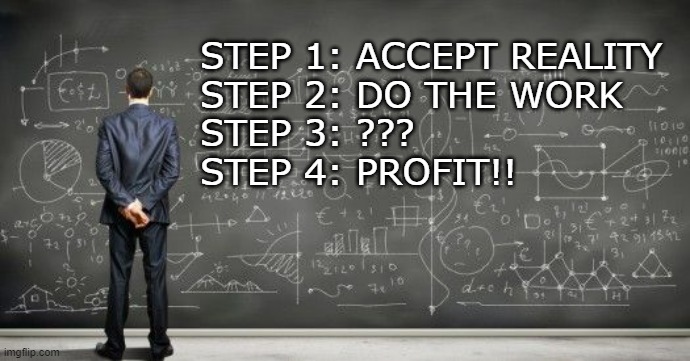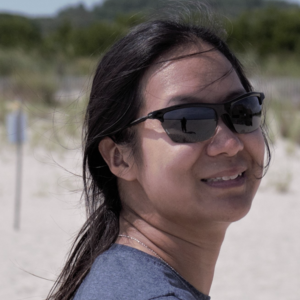
This past weekend, I spent two days with John Hearne of Two Pillars Training. Advertised as separate classes, Saturday was all about examining the characteristics of people who win in violent fights, and how we can learn from them to increase our own odds of success if we face that worst day ourselves. Sunday, we looked at the people those fights might be against: what they want, who they want to get it from, and how. Together, it was like mashing together different variations of what happens in vicious criminal attacks, freezing them into a globe, and walking around it to figure out all of the details within. Studies and statistics figured widely, and detailed analyses of specific events, but broad themes emerged. I’m going to tell you the upshot, but don’t mistake knowing the conclusion to understanding how to get there. Let me try to explain.
The first step to surviving the bad in life is to accept the reality that it exists at all. There’s a saying among boxers that the punch that knocks you out is the one you didn’t see coming, and it’s like that with both violent crime and any of the other troubles that fate might throw your way. If you have even a hint that it’s inbound, then maybe you can sidestep it, maybe you can brace for it, maybe you can even shove back against it. When it comes to violent crime, anybody with any exposure to the news knows that it’s out there. The trick, I think, isn’t just about knowing that it exists, but that it exists in your neighborhood, on your block, even in your home. When you realize that bad things can happen to you and the people you know and love, it changes how you view the world. Paranoia isn’t a necessary outcome, but getting past obliviousness and faith that bad things only happen to other people in other places is a necessary precondition to being able to prepare for it.
It can be the hardest step, and made harder by having to face exactly what violent crime looks like. Our cultural fascination with true crime gives us an idea of what bad guys can accomplish but it’s so easy to swipe away, to hit stop and move on. It’s hard to immerse ourselves into evil, to truly internalize how cruel one person can be to another. I’d argue that it’s not healthy to dip too deeply into it, and risk losing hope about humanity. At the same time, you need to have at least the barest clue that bad guys might be motivated to hurt you for nothing more than their own ego or because you’re in the way of their payday, that they might be more dedicated and skilled than you, that they might be determined to win at all costs. It’s not even that the bad guys might hate you; worse, they may feel nothing at all or simply feel happiness and joy at taking you out of their way or making you into their example, the product of their art. It’s awful, but like a potholes in a road, we can’t do anything about it unless we know they exist and learn how to see them coming.
There is a solution though. It’s not an easy one, but even starting down the road towards finding it can be enough to keep evil merely at your doorstep and not inside and in your face. Here’s all it is:
Do the work.
By that, I’m talking about learning and implementing all of the various safety strategies that we talk about so much here at OHO. You need, as John calls it, general deselection – preventing bad guys from choosing you as their victim today – and specific and forced deselection – getting bad guys to change their minds about attacking you, with violence if necessary. The changes you might need to make to how you move through the world and interact with people could be minor, a refinement of who you are and what you do, or could themselves be a seismic shift in everything about you. You need to surround yourself with the right environments and the right people so that you can better avoid stupid people in stupid places at stupid times. It sounds simple, but it’s not easy if it requires you to find new jobs, leave your old friends, or move to new places. All that and you need so-called hard skills, using tools like pepper spray and guns and knives perhaps, not to mention being able to move your own body against the demands another might impose when they try to force you to their will.
The work is not a time-bound effort. It’s not something you can do once and have it be enough for the rest of your life. You’ll have to revisit it over and over, to learn new aspects and review old ones. As John taught us, many repetitions performed often is the only way we can ensure that we have what we need, when we need it. All of us have had the experience of being shown a new skill, trying it a few times, and struggling to perform it again a few months or years later. Picking it up again might not be as difficult as the first time around, but it will take some time, some attention. If, however, we practice it a whole lot at the beginning and keep practicing it every week, every day, at that same six-month mark after from day one, we are so much more fluent with performing it. It’s the same for self-defense skills as everything else, including keeping fresh the mindsets and thought processes that go into staying safe.
It sounds like so much, and it can be. We have to accept the terrible things that can happen to us, from other people and otherwise. We have to adjust and shift how we approach the world, and dedicate time and other resources to be able to avoid or fight back against not just bad guys, but really bad guys. It might fundamentally change who we are. And that’s no bad thing, as acknowledging that the scary stuff exists allows us to face those fears, and make positive actions to managing them instead of relying on luck and fate to survive. Beyond that, it makes us more confident, more capable of being on our own, so that we can choose when we don’t want to be.




